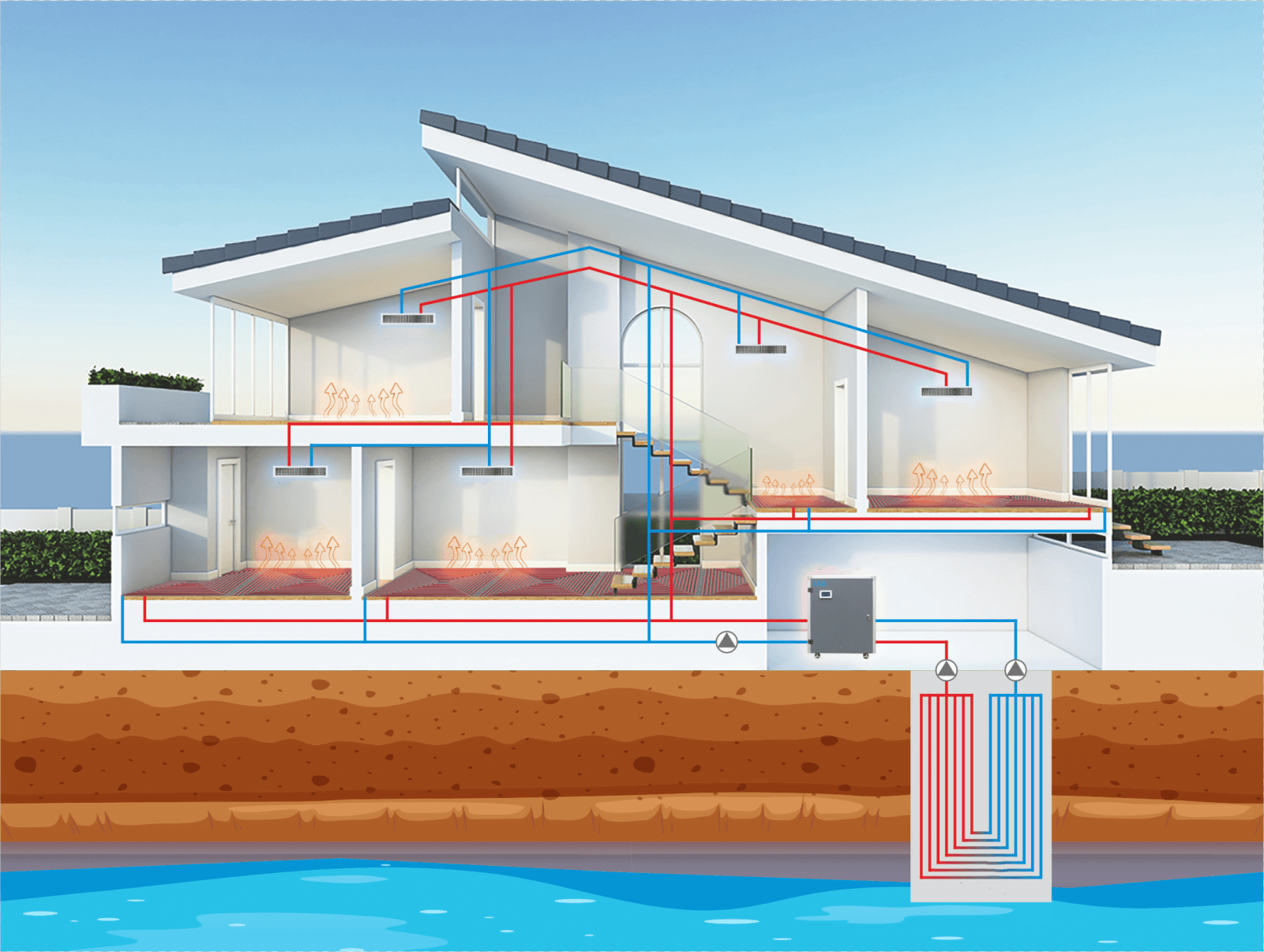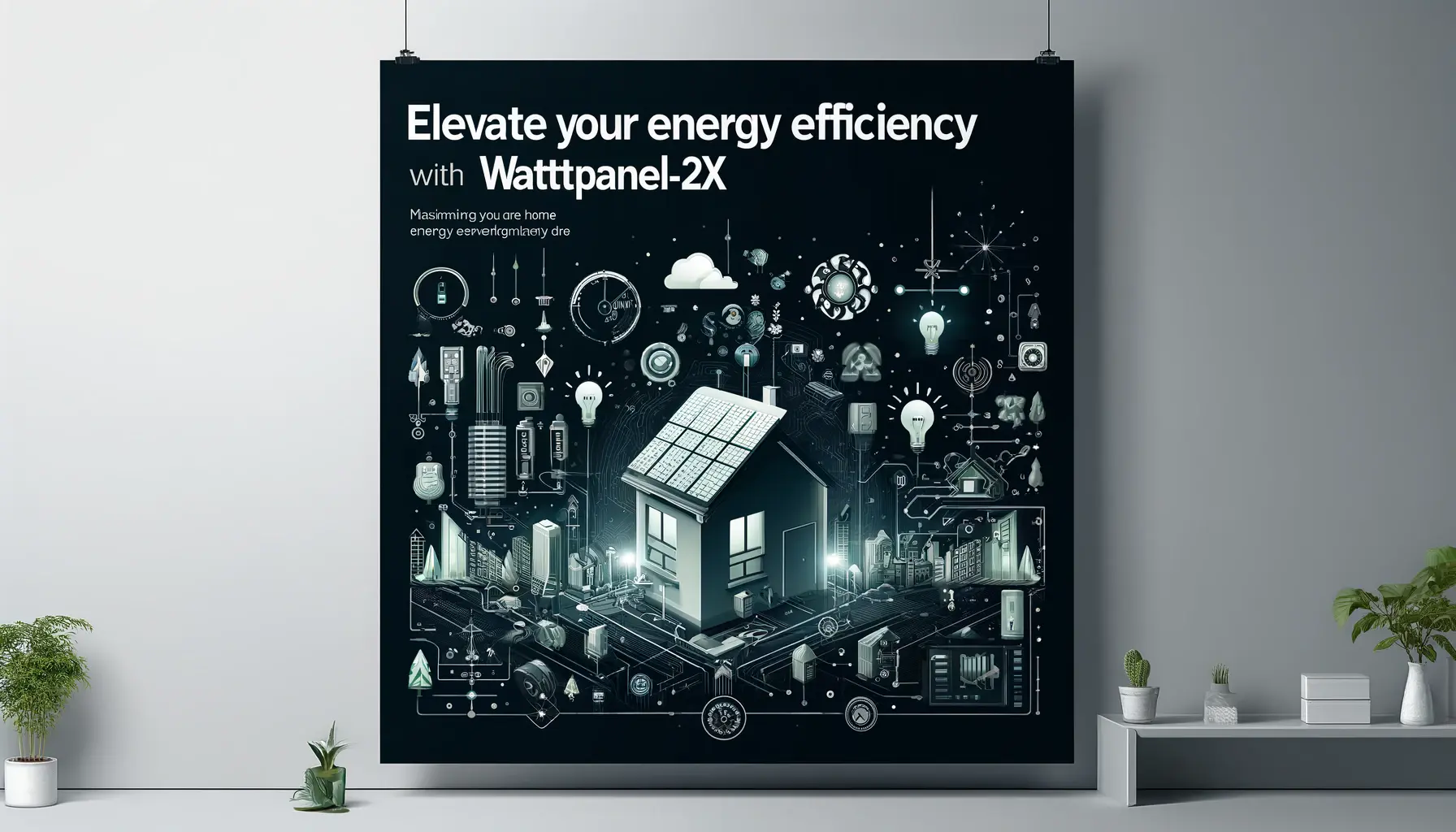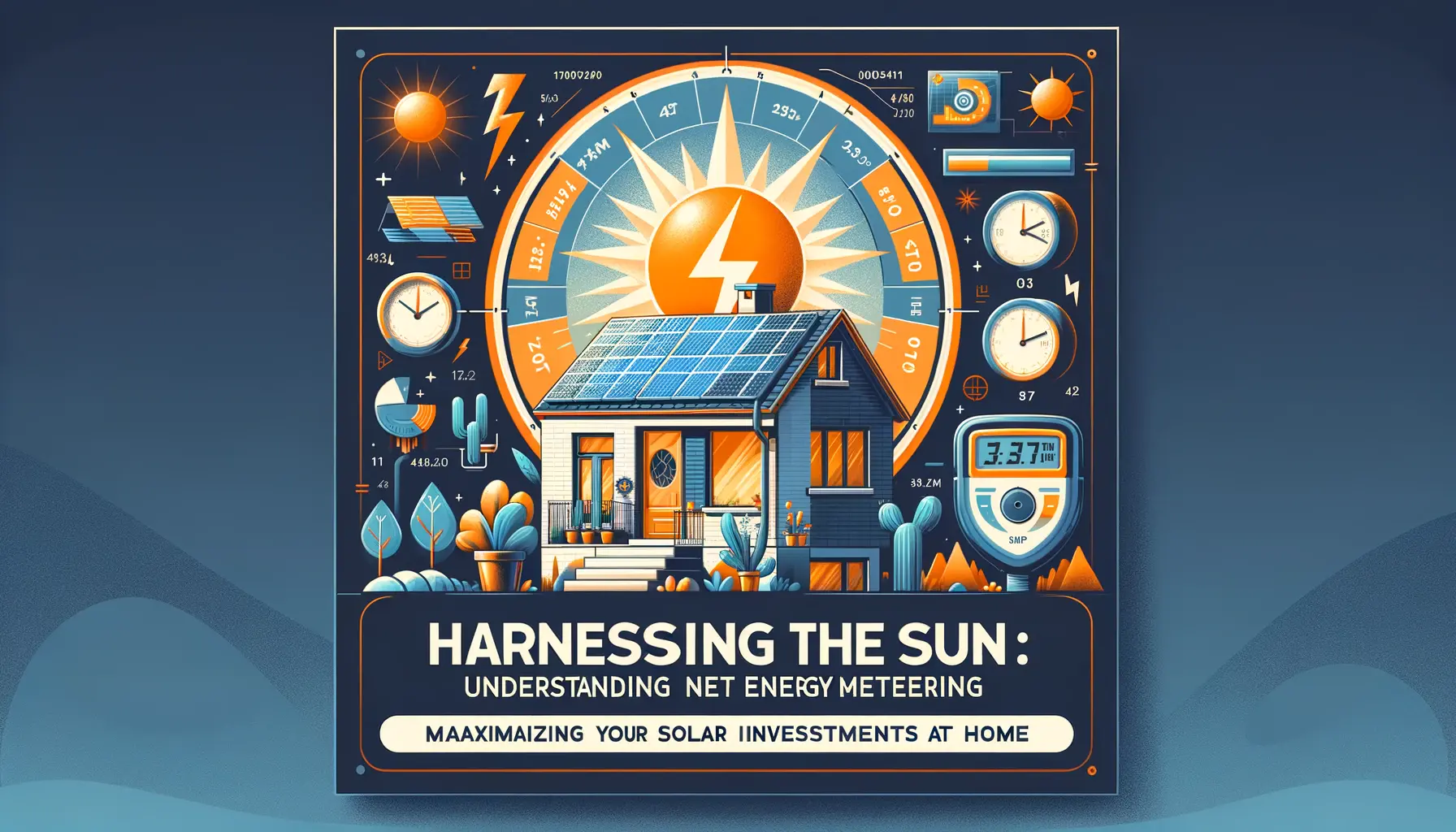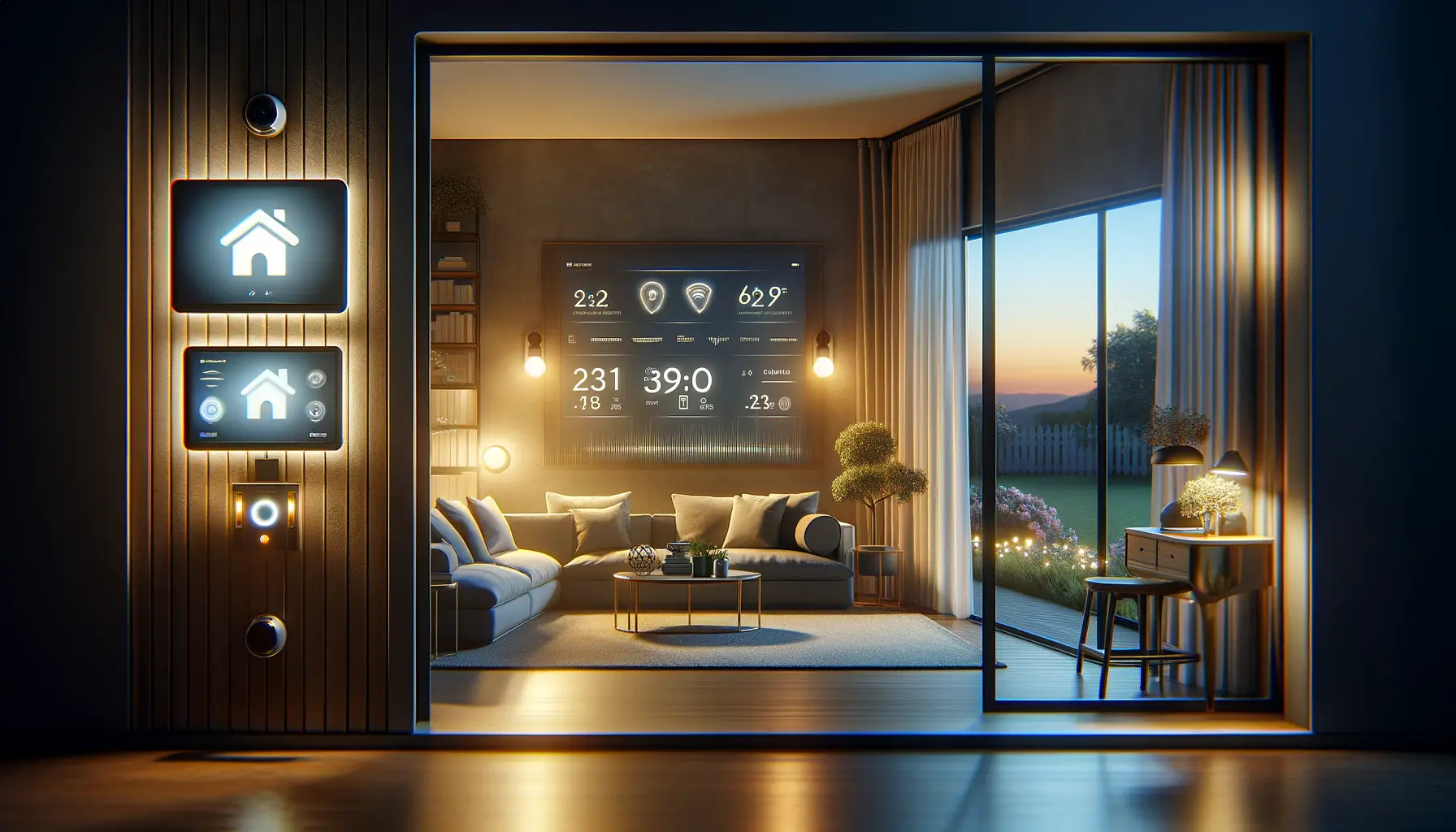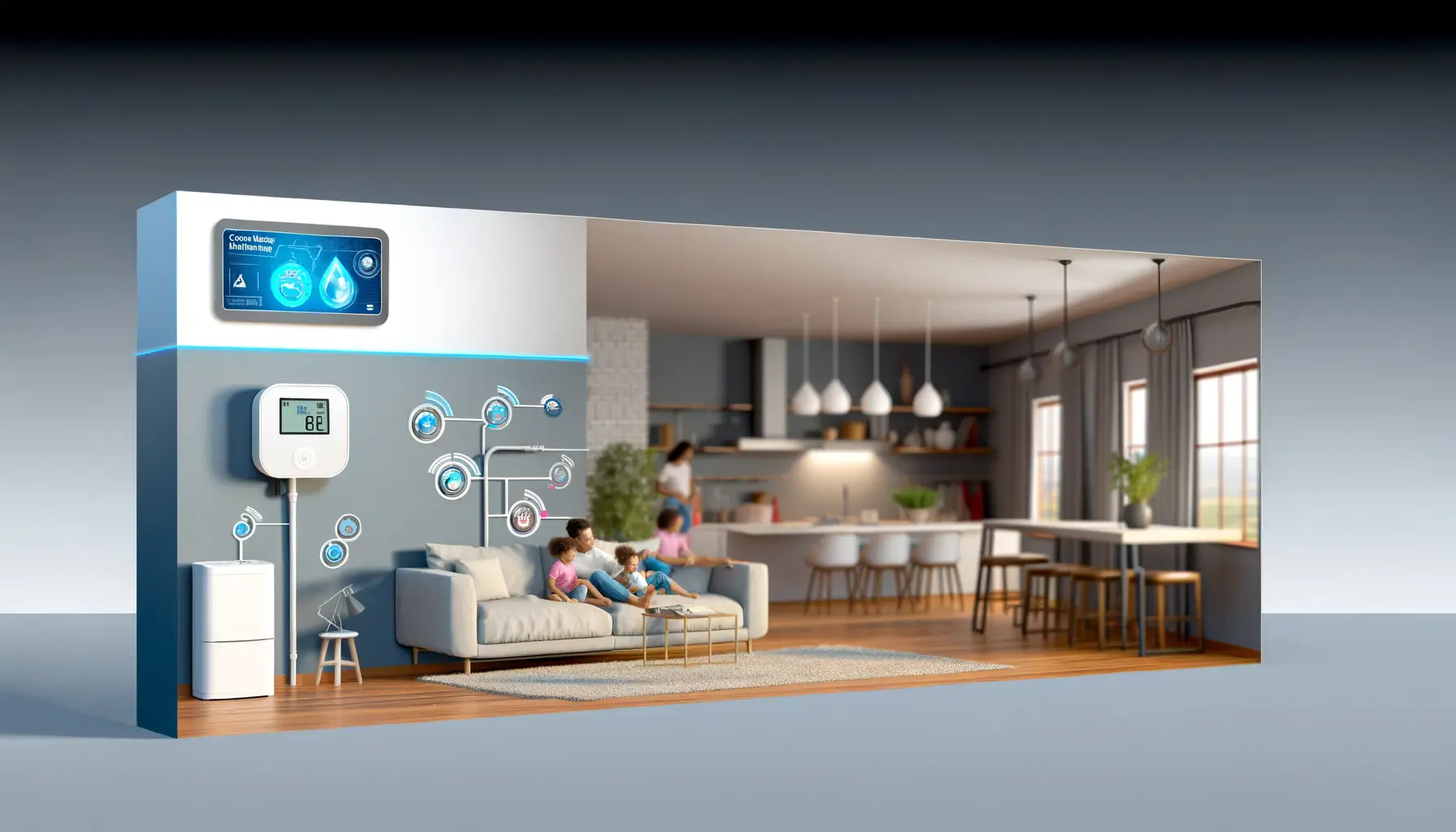
In today’s home environment, proper temperature control is not only related to the comfort of living but also directly affects energy consumption and economic benefits. From underfloor heating to central air conditioning, different types of thermostats play a core role, helping us maintain a constant and comfortable indoor temperature through the changing seasons. With the development of technology, various types of thermostats have appeared on the market, each with its unique functions and applicable scenarios. This article will introduce seven common types of home thermostats through detailed tables and analysis, helping you understand the characteristics and applications of each type of thermostat to make more appropriate choices.
Overzicht van de thuisthermostaat
To more visually present the basic information and main functions of different thermostats, we first compare these seven common types of home thermostats through a table.
Tabel 1: 7 typen thermostaten en functievergelijking
| Thermostaattype | Belangrijkste kenmerken | Aanbevolen omgeving |
|---|---|---|
| Vloerverwarmingsthermostaat | Regelt vloerverwarmingssystemen en zorgt voor een gelijkmatige warmte binnenshuis. | Woon- en kantoorruimtes, vooral in koude streken. |
| Warmtepompthermostaat | Regelt verwarming en koeling van warmtepompen, efficiënt energieverbruik. | Gebieden met grote seizoensveranderingen. |
| Elektrische verwarmingsthermostaat | Regelt de temperatuur van elektrische kachels of elektrische vloerverwarming. | Elke kleine ruimte die snel verwarmd moet worden. |
| Centrale airconditioningthermostaat | Regelt het verwarmings- en koelsysteem van een heel gebouw. | Grote woon- of bedrijfsgebouwen. |
| Thermostaat van de boiler | Bestuurt apparatuur voor het verwarmen van water om een constante watertemperatuur te garanderen. | Huizen, hotels en andere plaatsen waar veel warm water nodig is. |
| Thermostaat voor zonneboiler | Beheert zonneboilersystemen voor warm water en optimaliseert de energieabsorptie en -omzettingsefficiëntie. | Milieuvriendelijke gebieden met veel zonlicht. |
| Frisse lucht thermostaat | Bestuurt verseluchtsystemen en regelt de temperatuur en de kwaliteit van de lucht die binnenkomt. | Woongebieden met een hoge bevolkingsdichtheid, omgevingen waar continue toevoer van frisse lucht noodzakelijk is. |
Through this table, we can preliminarily understand the main functions and applicable environments of each thermostat. Next, we will detail the specific characteristics and applications of each type of thermostat.
Gedetailleerde introductie van 7 soorten thermostaten
1. Vloerverwarmingsthermostaat

Inleiding en functie:
The underfloor heating thermostat is designed to control floor heating systems. It monitors indoor temperatures through temperature sensors and adjusts the output of underfloor heating to ensure the floor temperature is even and meets the set comfort level. The heat provided by the underfloor system radiates evenly from the ground up, increasing thermal efficiency and reducing air dust movement, which is a significant advantage for people sensitive to respiratory systems.
Typisch gebruik:
In residential and commercial properties, underfloor heating thermostats are commonly used in main living areas such as living rooms, bedrooms, and bathrooms, providing continuous and comfortable heat. Users can set daily or weekly heating schedules based on their living habits to maximize energy efficiency.
The following sections will continue to detail the remaining six common types of home thermostats, their functions, typical usage, and characteristics.
2. Warmtepompthermostaat
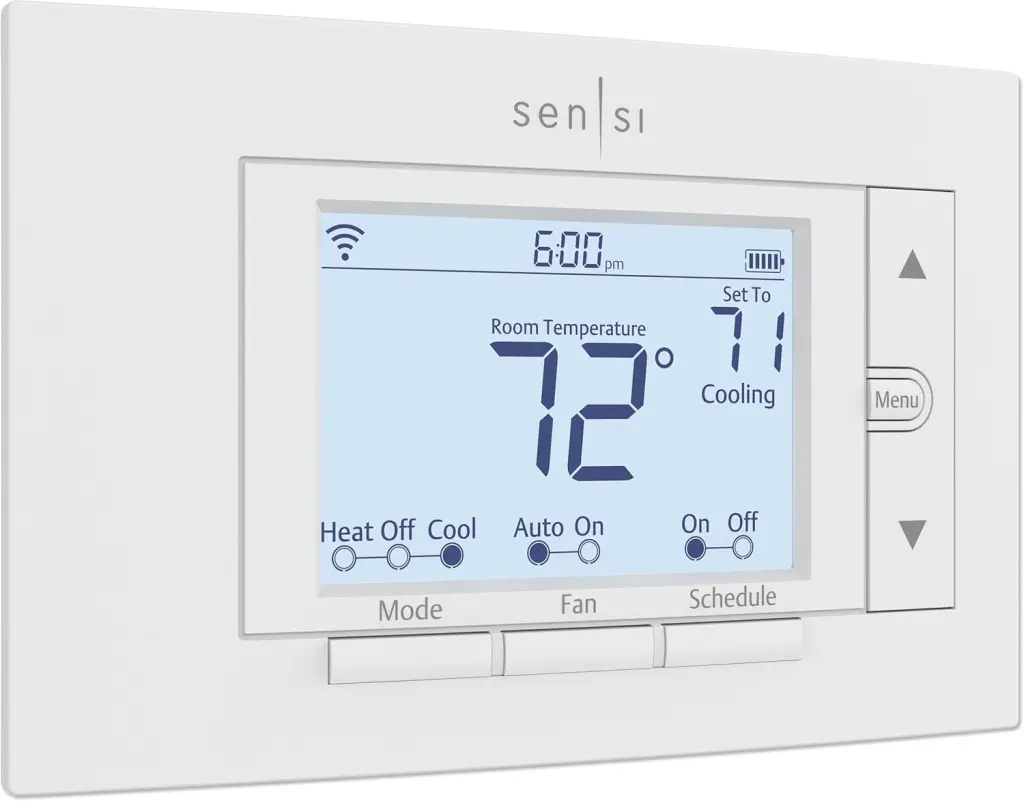
Inleiding en functie:
The heat pump thermostat controls heat pump systems, which can provide both heating and cooling functions, making it very suitable for areas with significant temperature changes throughout the year. The heat pump thermostat can optimize the operation of the heat pump, improving energy efficiency and reducing energy consumption.
Typisch gebruik:
Heat pump thermostats are typically installed in residential or commercial buildings that require year-round temperature regulation. Users can set temperature thresholds to ensure indoor temperatures remain comfortable regardless of external temperature changes.
3. Elektrische verwarmingsthermostaat
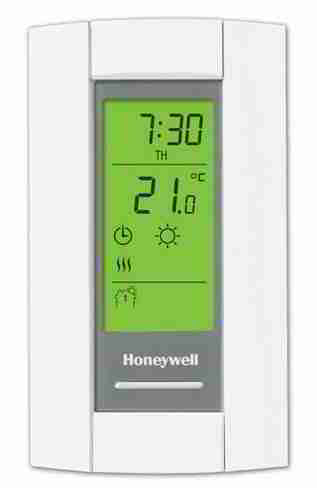
Inleiding en functie:
The electric heating thermostat controls electric heating equipment, such as electric radiators or electric heated floors. This type of thermostat can precisely regulate the output of electric heating devices to maintain a stable indoor temperature.
Typisch gebruik:
In homes or offices, electric heating thermostats are suitable for quickly heating small spaces. Users can adjust the temperature as needed or set timers to automatically turn heating on or off at specific times.
4. Centrale airconditioningthermostaat

Inleiding en functie:
The central air conditioning thermostat manages the central air conditioning system, controlling the heating and cooling of an entire building or house. This thermostat can achieve complex multi-zone temperature control, improving overall energy efficiency.
Typisch gebruik:
Central air conditioning thermostats are usually installed in large residential or commercial buildings, setting different temperatures for different areas or floors to achieve precise temperature control.
5. Thermostaat van de boiler

Inleiding en functie:
The water heater thermostat controls the operation of water heaters to ensure constant water temperature and avoid energy waste. This thermostat can precisely adjust the temperature of the water heater, suitable for homes, hotels, or other places that require a large amount of hot water.
Typisch gebruik:
Users can set the water temperature according to personal preferences and needs. Water heater thermostats can also set specific heating schedules to save energy and provide hot water when needed.
6. Thermostaat voor zonneboiler

Inleiding en functie:
The solar water heater thermostat manages the temperature exchange between solar collectors and storage tanks. It optimizes the absorption and conversion of energy, ensuring system efficiency is maximized while preventing overheating.
Typisch gebruik:
In sun-rich areas, solar water heater thermostats can automatically adjust hot water production based on solar radiation intensity, ensuring a continuous supply of efficient and environmentally friendly hot water.
7. Frisseluchtthermostaat
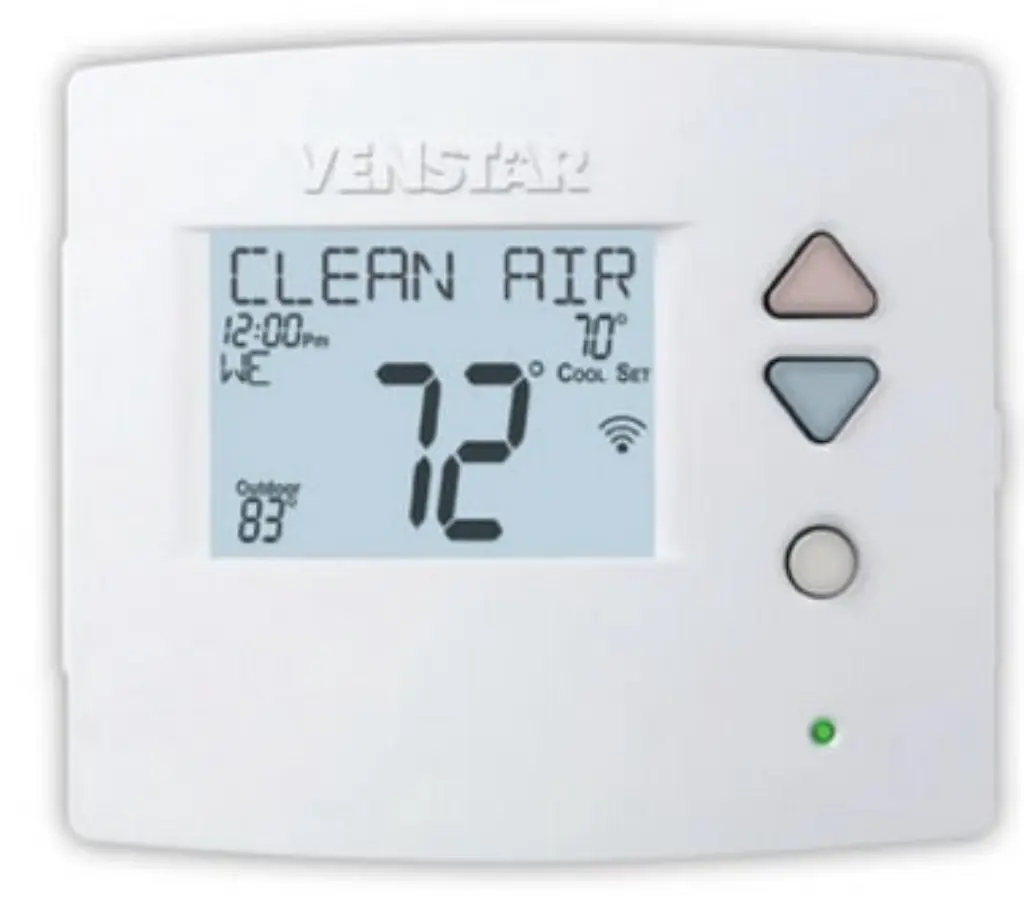
Inleiding en functie:
The fresh air thermostat controls the operation of fresh air systems, which are responsible for introducing processed fresh air indoors. It can adjust the temperature of the incoming air, improving air quality and providing a healthy, comfortable environment for living spaces.
Typisch gebruik:
Fresh air thermostats are particularly important in high-density residential areas or industrial environments. They can automatically adjust the intake based on the temperature difference between the outside and inside, ensuring indoor air is fresh and at a suitable temperature.
This detailed introduction provides specific information and usage guidelines for various thermostats, helping users choose the most suitable thermostat based on their actual needs and living environments. The following sections will involve more discussions on international specifications and standards, ensuring global users can safely and effectively use these devices.
Bedradingsmethoden en regelstrategieën
Next, we will detail the wiring methods and control strategies of various thermostats through another table, ensuring you can choose the most suitable configuration based on your home’s specific needs.
Tabel 2: 7 typen thermostaten, bedradingsmethoden en regelstrategieën
In this section, we will detail the wiring methods and control strategies of various thermostats through a table, which is crucial for ensuring correct installation and optimal performance of the devices.
| Thermostaattype | Bedradingsmethode | Controlestrategie |
|---|---|---|
| Vloerverwarmingsthermostaat | Usually includes power, ground, and control wires, connected to the underfloor heating system’s power and control ends. | Temperatuurverschilregeling, PID-regeling, programmeerbare en slimme leerfuncties. |
| Warmtepompthermostaat | Needs to be connected to the heat pump’s power and control ends, may require a multi-wire system to support heating and cooling functions. | Temperatuurverschilregeling, tijdschemaregeling, slimme aanpassing. |
| Elektrische verwarmingsthermostaat | Eenvoudige twee- of driedraadssystemen die elektrische verwarmingselementen rechtstreeks aansturen. | Temperatuurverschilregeling, timerregeling, sommige modellen ondersteunen afstandsbediening. |
| Centrale airconditioningthermostaat | Complexe meeraderige systemen die verbinding moeten maken met verschillende onderdelen van het centrale aircosysteem. | Zoneregeling, gezamenlijke regeling van temperatuur en vochtigheid, slimme en op afstand bediende regeling. |
| Thermostaat van de boiler | Minimaal twee-aderige bedrading, die de aan-/uitschakelaar van de kachel aanstuurt. | Temperatuurverschilregeling, regeling van efficiëntieoptimalisatie. |
| Thermostaat voor zonneboiler | Includes temperature sensor wires, power wires, and control wires, to optimize solar energy collection and use. | Temperatuurprioriteitscontrole, efficiëntiebewaking, automatische aanpassing. |
| Frisse lucht thermostaat | Moet meestal worden aangesloten op binnen- en buitentemperatuursensoren en een frisseluchtunit. | Automatic adjustment based on indoor and outdoor temperature difference, timer control, air quality feedback control. |
Through this table, we can see the differences in wiring methods and control strategies among different types of thermostats, which directly affect the installation process and daily operation efficiency of the devices.
Internationale specificaties en normen
For thermostats used across countries and sold in international markets, understanding and complying with the electrical specifications and safety standards of different countries and regions is extremely important. Here is a table summarizing some of the main market specifications and wiring standards.
Tabel 3: Specificaties en bedradingsnormen in verschillende landen en regio's
| Land/regio | Spannings- en frequentievereisten | Regelgeving en certificeringen | Speciale bedradingsvereisten |
|---|---|---|---|
| USA | 120V/60Hz | UL-certificering, NEC Electrical Code | Strikte eisen voor aarding en beschermingsmaatregelen |
| EU | 220-240V/50Hz | CE-markering, RoHS-naleving | Must comply with the EU’s Low Voltage Directive and Electromagnetic Compatibility Directive |
| China | 220V/50Hz | CCC-certificering | Moet zich aanpassen aan de hoge bevolkingsdichtheid en de hoge gebruiksfrequentievereisten |
| Japan | 100V/50Hz of 60Hz | PSE-certificering | Specifieke anti-seismische en brandwerende normen |
| Australië | 230V/50Hz | SAA-certificering | Bij de installatie moet rekening worden gehouden met de invloeden van het buitenklimaat, zoals waterdichtheid en UV-bescherming |
This table shows some of the key electrical and safety standards to consider when operating in the global market, helping manufacturers and users ensure product compatibility and safety.
Slimme bedieningsmodi: innovatie in moderne thermostaten
As technology continues to advance, the widespread adoption of smart home systems has greatly changed our way of managing home appliances, and thermostats are no exception. Smart control modes make thermostats not just simple temperature adjustment devices but a system that can increase energy efficiency, enhance comfort, and simplify daily life. This section will explore the control methods of smart thermostats and their benefits.
Basiskenmerken van slimme thermostaten
The main difference between smart thermostats and traditional thermostats is their connectivity and automation features. These thermostats are usually connected to the home network through Wi-Fi or other wireless technologies (such as Zigbee or Z-Wave), allowing users to remotely control the home temperature via smartphone apps, tablets, or voice assistants (like Amazon Alexa, Google Assistant, or Apple HomeKit).
Belangrijkste slimme bedieningsfuncties
- Afstandsbediening: Users can view and adjust the home temperature settings from anywhere via an app, whether at the office or on vacation.
- Automatische planning: Smart thermostats can automatically set temperature schedules based on users’ daily activity patterns. For example, it can start heating the home automatically before you usually get up, ensuring the room is warm and comfortable when you wake up.
- Energie-efficiëntieanalyse: Many smart thermostats provide detailed energy consumption reports and analyses, helping users understand how their heating and cooling habits affect energy consumption and how to adjust settings to reduce energy costs.
- Geofencing: Using the location of users’ smartphones, smart thermostats can know when users leave home or are on their way home. The system adjusts the temperature accordingly to optimize energy efficiency and provide a comfortable environment when users arrive.
- Spraakbesturing: Once integrated with smart home assistants, users can simply use voice commands to adjust temperature settings, greatly increasing convenience and accessibility.
- Leervoorkeuren: Some high-end smart thermostats, like the Nest Learning Thermostat, have the ability to learn users’ preferences and can automatically establish a suitable temperature schedule for the home within a few days without much user intervention.
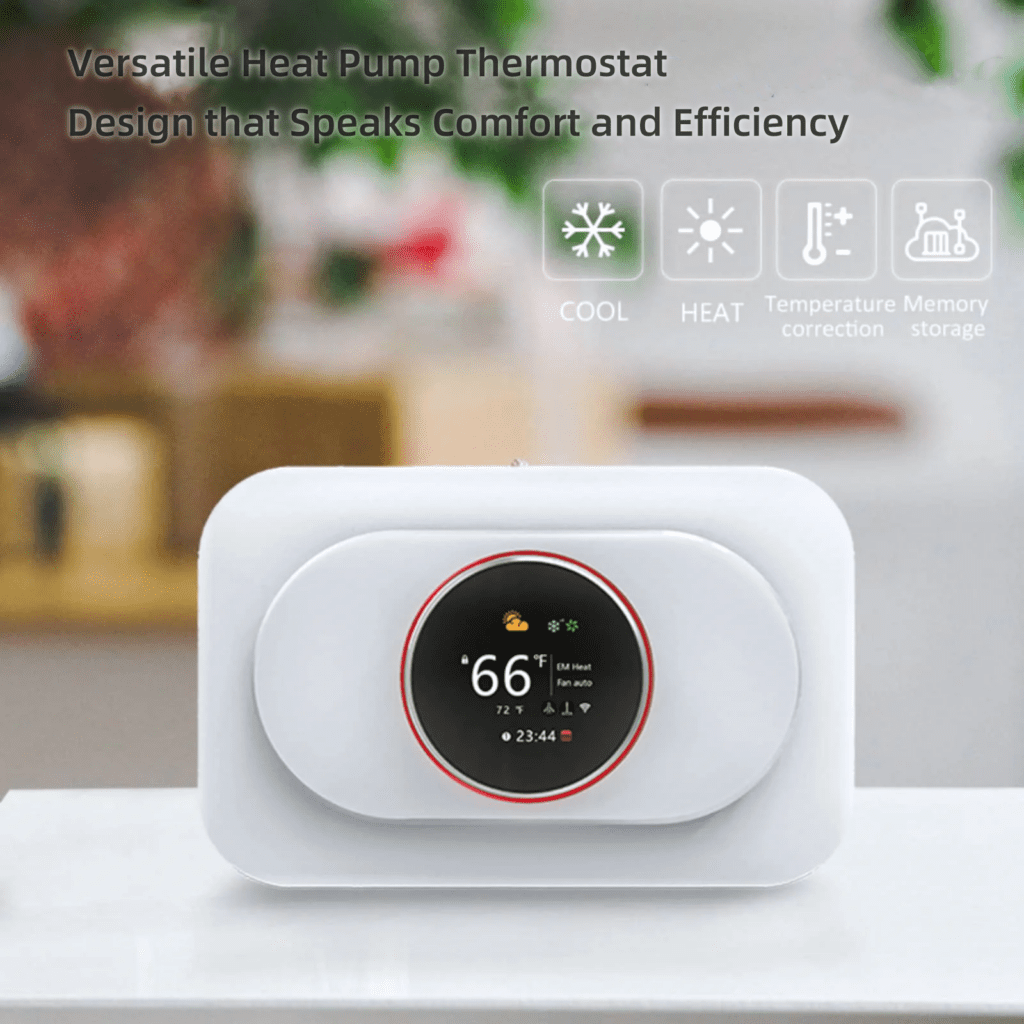
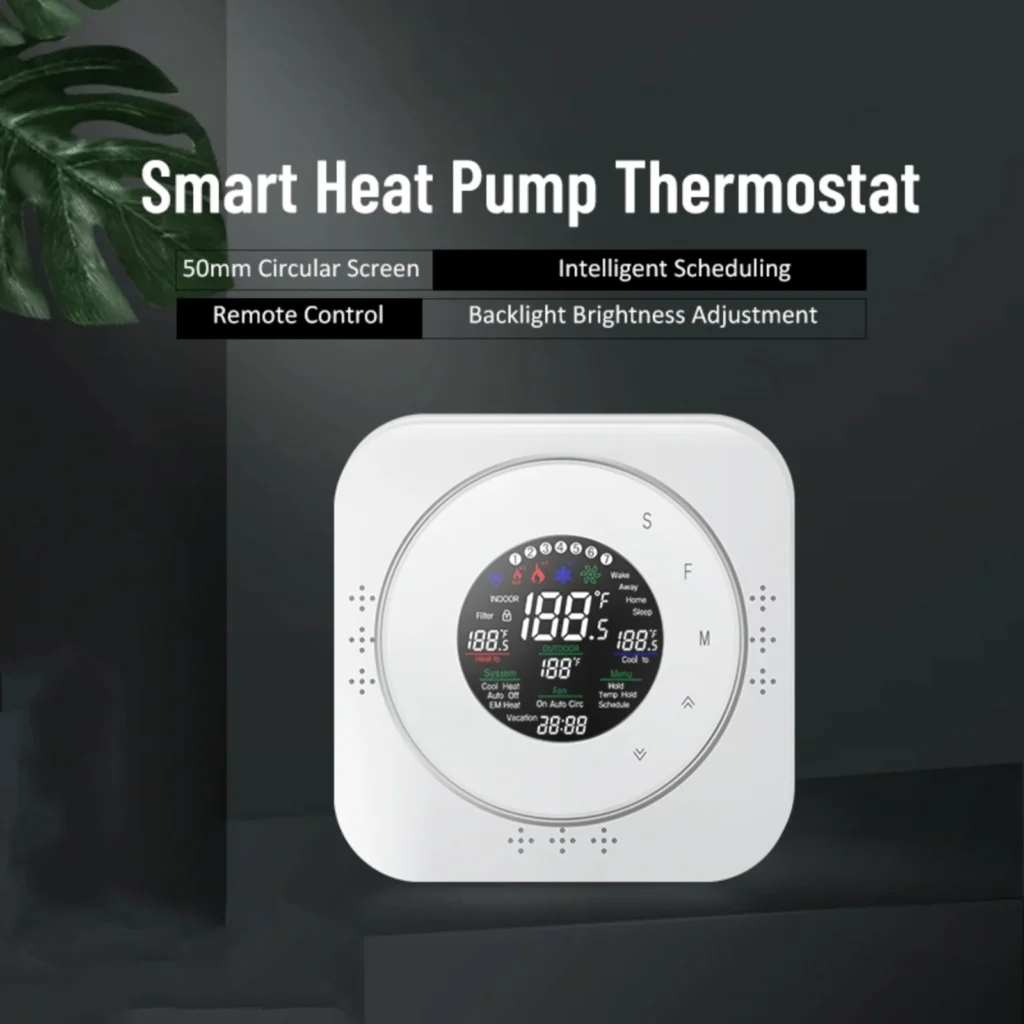

Praktische toepassingen van slimme thermostaten
Considering the potential of smart thermostats to improve energy efficiency and user comfort, many modern homes and offices have begun deploying these devices. For example, a family might use a smart underfloor heating thermostat to preheat rooms in winter, while optimizing cooling efficiency with a central air conditioning thermostat in summer.
The integration and application of smart thermostats not only enhance the comfort of living and working environments but also help achieve a more sustainable lifestyle by precisely controlling and intelligently adjusting to reduce energy waste. As technology continues to advance and user awareness increases, it is expected that smart thermostats will become an important component of home automation in the future.
Energiebesparende effecten en indicatieve gegevens van slimme thermostaten
Smart thermostats not only improve the comfort and convenience of homes, but they also play a crucial role in energy saving and reducing environmental impact. Through smart features, these devices can optimize the timing of heating and cooling, reducing unnecessary energy consumption, thereby bringing significant energy-saving effects to users. This section will explore the energy-saving effects of smart thermostats and provide some specific energy-saving data.
Energiebesparende functies
- Automatische aanpassing: Smart thermostats can automatically adjust settings based on outdoor temperatures and indoor activity patterns, avoiding excessive heating or cooling, which directly reduces energy waste.
- Efficiënte planning: By learning users’ living habits, smart thermostats can automatically create efficient heating and cooling schedules. For example, they automatically reduce the operation of heating or air conditioning during times when users are typically not at home.
- Detailoptimalisatie: Smart thermostats can also achieve energy savings by making small adjustments to temperature settings (such as lowering by 1-2°F/about 0.5-1°C), and these small changes usually do not affect the comfort of the occupants.
Indicatieve energiebesparingsgegevens
The energy-saving effects of smart thermostats can be more clearly demonstrated through the following data:
- Vermindering van het energieverbruikGeschat wordt dat slimme thermostaten het energieverbruik in huis met 10% tot 12% kunnen verminderen.
- Jaarlijkse besparingen: On average, homes can save about 10% to 23% on heating costs and 15% on air conditioning costs per year by using smart thermostats.
- Langetermijninvesteringsrendement: Although the initial investment for smart thermostats is relatively high, according to data from the U.S. Environmental Protection Agency (EPA), the average family can recoup this cost through energy savings within two years.
These data show that although smart thermostats cost more than traditional thermostats, they can achieve cost-effectiveness in the long run by significantly reducing energy costs. More importantly, this type of thermostat helps households manage and use energy more effectively through automation and intelligence features.
Samenvatting
Slimme thermostaten verbeteren niet alleen het gemak en comfort van ons leven,
but their energy-saving features also help promote homes towards a greener, more sustainable direction. As technology continues to advance, the market for smart thermostats is expected to expand further, and their energy-saving technologies will continue to improve, contributing more to the global improvement in energy efficiency.
Choosing and installing the right thermostat is crucial for enhancing the comfort and energy efficiency of home and office environments. Through the introduction and analysis in this article, we hope readers can better understand the functions, applicable scenarios, wiring methods, and international specification differences of various thermostats, thereby choosing the most suitable thermostat for their needs. In today’s increasingly globalized world, the correct selection and use of these devices not only enhance the energy efficiency of individuals and businesses but also ensure compliance with regulations and standards in different regions, achieving safe, efficient environmental control.
